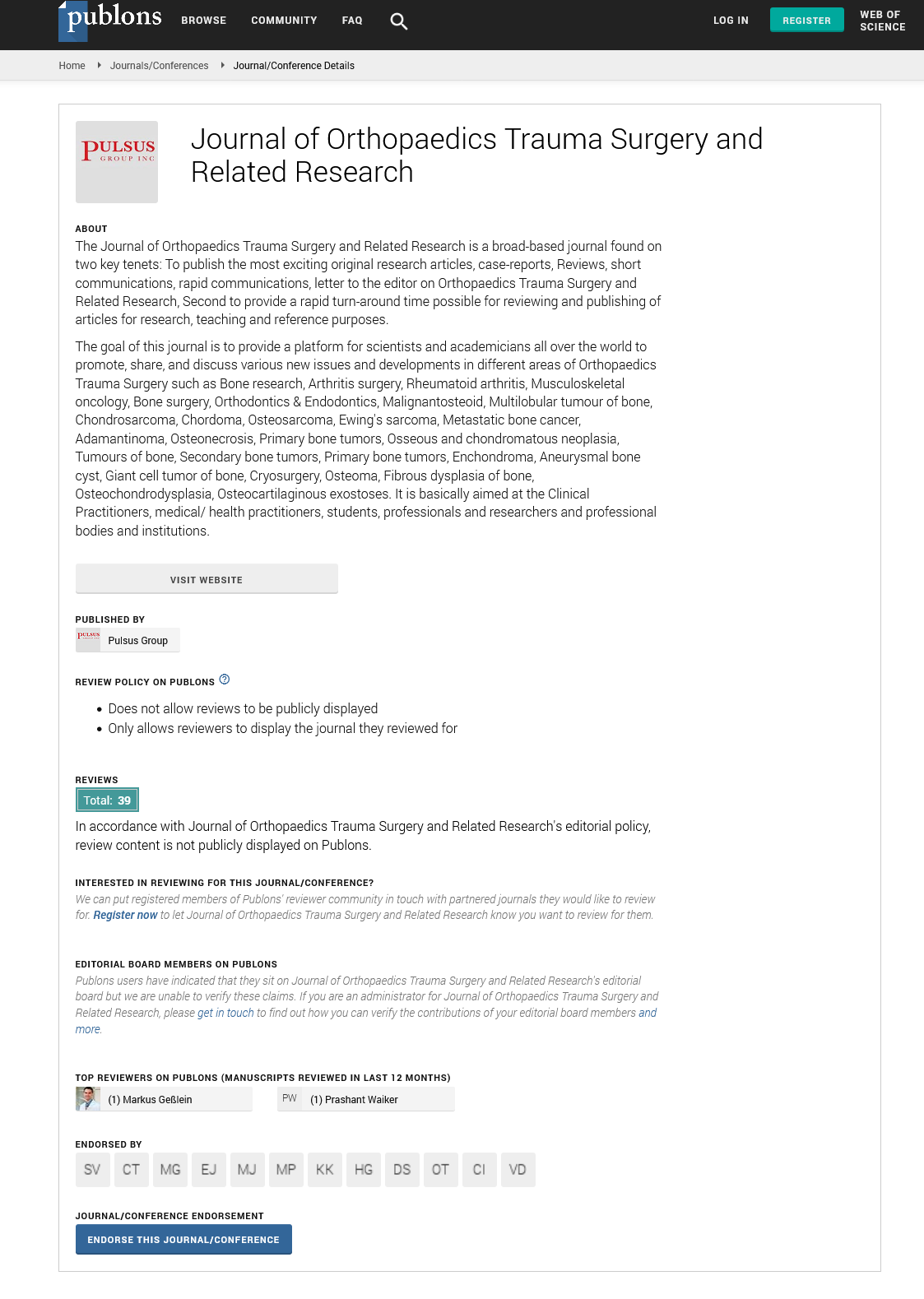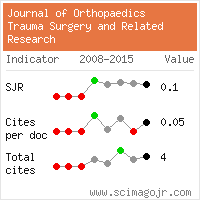Outcomes of surgical management of per-trochanteric fractures: About 363 cases
2 Department of Medicine and Pharmacy of Fes., Morocco
Received: 10-Dec-2018 Accepted Date: Feb 27, 2019 ; Published: 06-Mar-2019
This open-access article is distributed under the terms of the Creative Commons Attribution Non-Commercial License (CC BY-NC) (http://creativecommons.org/licenses/by-nc/4.0/), which permits reuse, distribution and reproduction of the article, provided that the original work is properly cited and the reuse is restricted to noncommercial purposes. For commercial reuse, contact reprints@pulsus.com
Abstract
Background: Per trochanteric fractures are undoubtedly the lesions most frequently encountered in traumatology, particularly in the elderly, where they retain a high mortality rate The aim of our study was to evaluate the functional and radiological results of the surgical management of per trochanteric fractures.
Materials and methods: This was a retrospective study of 363 cases of per trochanteric fractures taken care of and followed from January 2012 to December 2016. The average age was 68.89 years (23-100 years) with 59.2% men and 40.8% women. 97.5% had support (protected or not) before trauma compared with 2.5% non-autonomous. The evolution of the consolidation and functional score of Parker and Palmer was evaluated at 1; 3; 6 and 12 months.
Results: 99.2% consolidation at 3.8 months (3-8 months). The cervico-diaphyseal angle variation was 4.2° (0°17.2°) for the overall population (p=0.0057); 4.3° (0°-17.2°) for Gamma Nail (GN) And 4.2° (0°-17°) for Dynamic Hip Screw (DHS). 94.16% had provided support (alone or protected). The mean Parker functional score at 12 months was 6.6 (0-9) overall (p<0.0001) and 6.67 (0-9) for GN and 6.65 (0-9) For DHS. Only 35% of patients had fully recovered their initial score. We had recorded 01 cases (0.27%) of deaths, 01 cases of nonunion, 04 cases of sweeping, 04 cases of late infection.
Conclusion: Our study shows that the consolidation of the fracture is not synonymous with functional recovery and autonomy. In the management of these fractures, emphasis should be placed on early support and functional rehabilitation.



 Journal of Orthopaedics Trauma Surgery and Related Research a publication of Polish Society, is a peer-reviewed online journal with quaterly print on demand compilation of issues published.
Journal of Orthopaedics Trauma Surgery and Related Research a publication of Polish Society, is a peer-reviewed online journal with quaterly print on demand compilation of issues published.